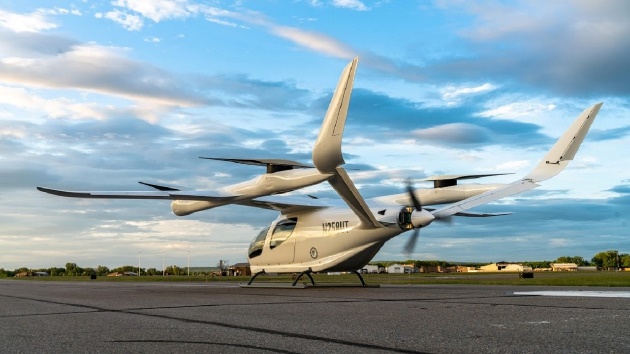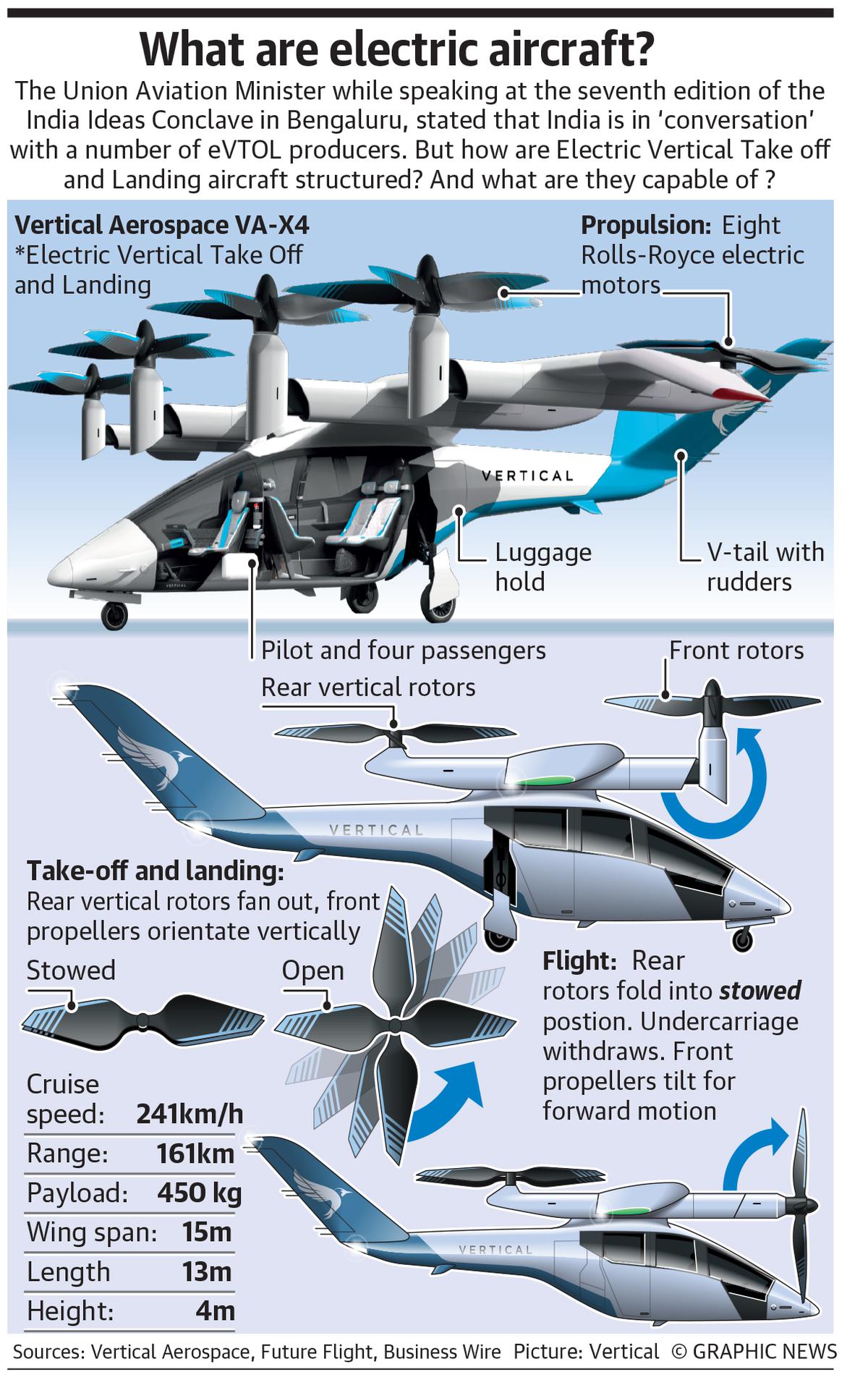Description

Disclaimer: Copyright infringement not intended.
Context
- The Government of India is exploring the possibility of inviting manufacturers of Electric Vertical Take off and Landing (eVTOL) aircraft to set up base in India.
What is eVTOL?
- An electric vertical take-off and landing (eVTOL) aircraft is one that uses electric power to hover, take off, and land vertically.
Use of Distributed Electric Propulsion technology
- Most eVTOLs also use what is called as distributed electric propulsion technology which means integrating a complex propulsion system with the airframe. There are multiple motors for various functions; to increase efficiency; and to also ensure safety.
- This is technology that has grown on account of successes in electric propulsion based on progress in motor, battery, fuel cell and electronic controller technologies and also fuelled by the need for new vehicle technology that ensures urban air mobility (UAM).
- Thus, eVTOL is one of the newer technologies and developments in the aerospace industry.

Why are the developments in powering eVTOLs?
- eVTOLs depends on battery technology and the limits of onboard electric power. Power is required during the key phases of flight such as take-off, landing and flight (especially in high wind conditions).
- There is also the important factor of weight. BAE Systems, for example, is looking at formats using a variety of Lithium batteries.
- Nano Diamond Batteries is looking at “Diamond Nuclear Voltaic (DNV) technology” using minute amounts of carbon-14 nuclear waste encased in layered industrial diamonds to create self-charging batteries.
- There are some industry experts who are questioning the use of only batteries and are looking at hybrid technologies such as hydrogen cells and batteries depending on the flight mission. There is even one that uses a gas-powered generator that powers a small aircraft engine, in turn charging the battery system. But whatever the technology, there will be very stringent checks and certification requirements.
What are the challenges?
- As the technology so far is a mix of unpiloted and piloted aircraft, the areas in focus include “crash prevention systems”. These use cameras, radar, GPS (global positioning system) and infrared scanners. There are also issues such as ensuring safety in case of powerplant or rotor failure. Aircraft protection from cyberattacks is another area of focus.
- A third area is in navigation and flight safety and the use of technology when operating in difficult terrain, unsafe operating environments and also bad weather.
Developments in the eVTOL arena point to impending disruption for helicopter manufacturers.
Way Ahead
- Regulatory authorities in India need to look at:
- Formulating regulations for pilotless vehicles, airworthiness certifications, and the need for a pilot’s licence;
- Implementing efficient energy management systems, onboard sensors, collision detection systems and advanced technologies such as artificial intelligence;
- Having in place infrastructural support such as take-off and landing zones, parking lots, charging stations and what are called vertiports;
- Creating a robust air traffic management system that is integrated with other modes of transportation, and putting in place a database to ensure operational and mechanical safety.
- The global market for eVTOLs was put at $8.5 million in 2021 and is to grow to $30.8 million by 2030. The demand will be on account of green energy and noise-free aircraft, cargo carrying concepts and the need for new modes of transport.
The status of eVTOL: a soon to be reality? - The Hindu
1.png)

















